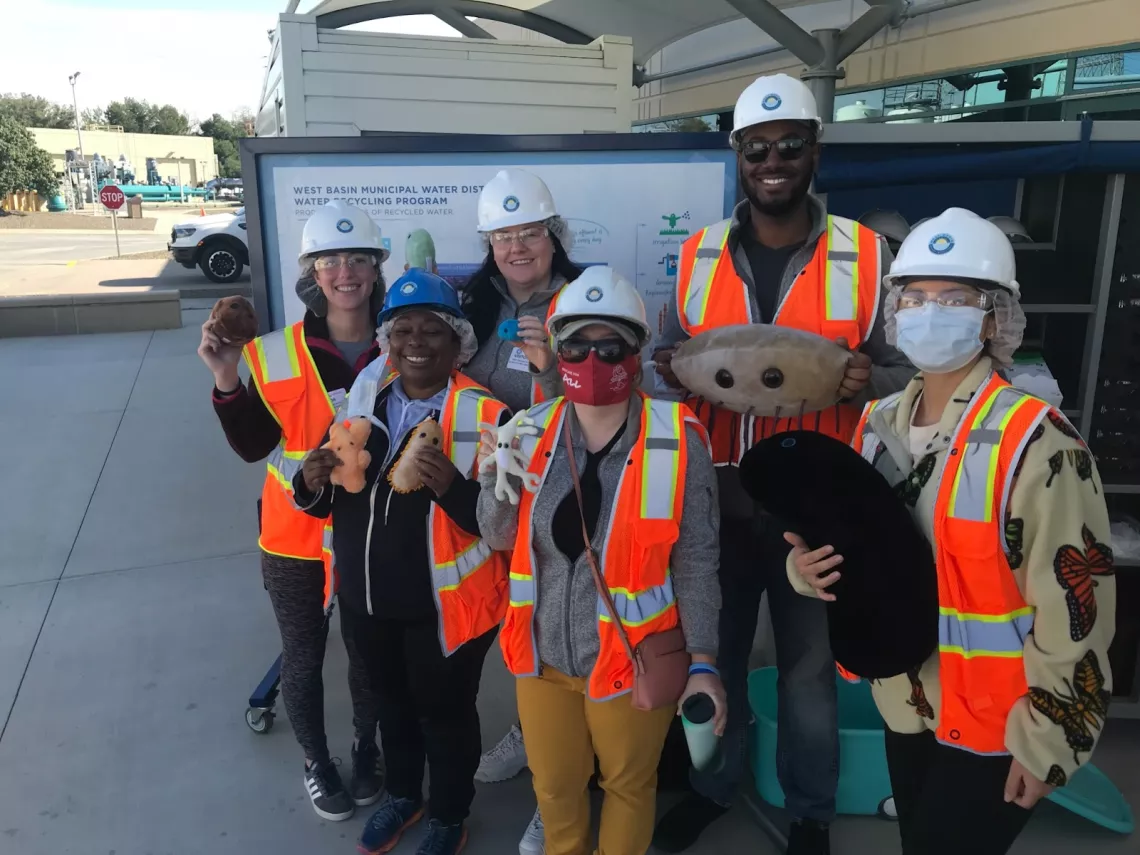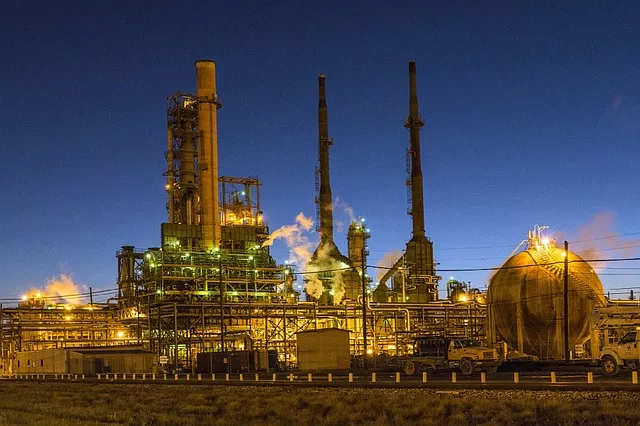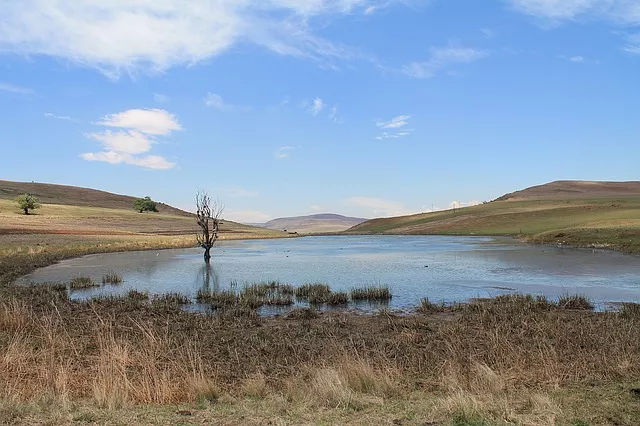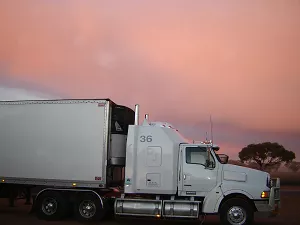
The Sierra Club California Water Team Toured Local Water Recycling Facilities
The Fight To Protect SB 1137 Is On!
Atmospheric Rivers In a Time of Drought
Introducing Our Newest Policy Associate, Mahtisa Djahangiri
Updates on CARB’s Advanced Clean Feets (ACF) Rule
Destiny Villarreal and Molly Culton

On February 2nd and 3rd, the Sierra Club California water staff took a trip to Los Angeles to tour two water recycling facilities. We toured the WRD Albert Robles Center for Water Recycling and Environmental Learning (ARC) and the Edward C. Little Water Recycling Facility to explore water recycling’s contribution to a resilient water plan for our state.
WRD is a LEED platinum-certified building in the San Gabriel Valley that was established in 2019. The building has permeable concrete which allows rain to flow through the pavement into the ground to be later used in our water supply. WRD also has a garden with native plants and bioswales to capture stormwater runoff and allow the water to seep back into the ground. The facility treats up to 14.8 million gallons of water per day, which meets 50% of the water needs for the 4 million residents they supply.
Edward C. Little is the largest facility of its kind in the United States. The facility was established in 1995 and produces 40 million gallons of usable water daily. They are the only facility in the country that produces five custom-made recycled water types. The five kinds of water are each used for industrial and irrigation purposes, industrial cooling towers, groundwater recharge, low-pressure refinery boiler feed water, and high-pressure boiler feed water. The facility conserves enough water to meet the needs for 80,000 households per year.
Imported water from the Colorado and Sacramento rivers, Mono Lake tributaries, and the Owens Valley accounts for 85% of Southern California’s water supply. Importing water is not a sustainable water strategy due to the excessive diversions of freshwater flows on which ecosystems and communities rely. Reusing and recycling water, along with conservation, efficiency, groundwater recharge and stormwater capture, are better solutions for California’s water problems.
The Fight To Protect SB 1137 Is On!

Last fall, environmental justice advocates secured a decades-long victory when Governor Newsom signed SB 1137. This prolific bill established a health protective 3,200ft setback distance between new oil and gas drilling sites and Californian homes, schools, and communities.
Now that victory is at risk.
The oil and gas industry used its influence to try to subvert democratic process. They spent tens of millions of dollars and hired professional signature gatherers to spread misinformation about SB 1137 and attain 600,000 signatures for a referendum qualification to overturn the law. What does this mean? Californians will have to fight to keep one of the most critical bills in CA legislative history on the books in the 2024 November election.
Sierra Club California and our allies are disappointed to hear that the referendum qualified for the 2024 ballot measure. However, this is only the beginning. With our partners across the state, we’ll be out to ensure Californians vote YES on SB 1137 in 2024.
Meanwhile, oil and gas permitting is still ongoing. There’s been an incredible 724% uptick in CalGEM-issued oil and gas permits within the buffer zone just months before the implementation of SB 1137. Our environmental justice coalition has been working to push back against this tide of new polluting oil and gas sites by advocating for CalGEM to deny ALL oil and gas permits within the health-protective zone until voters hit the ballots in 2024.
Keep an eye on your inbox for opportunities to engage in the fight against the oil and gas industry. We must protect underserved communities from ongoing toxic pollution in the communities they play, live, and work in. We’ll keep fighting until we stop all drilling where we’re living.
Atmospheric Rivers In a Time of Drought

Late December and early January brought an onslaught of nine atmospheric rivers to California, which claimed several lives, and caused severe flooding, power outages, damage to infrastructure, and threatened the safety of several communities.
After two of the driest years on record, the storms provided some reprieve to our water supply issues, but the overall impact of these storms should not be overestimated. Snowpack is above average in the Northern, Central and Southern Sierra, and reservoir conditions have improved. However, most reservoirs are not full, and many remain below the historic average for this time of year. Whether the snowpack will stay or melt away before April depends on weather conditions over the next few months. Most importantly, the vast majority of California is still experiencing either moderate or severe drought conditions as of this week.
The series of storms highlights an urgent need for California to update and maintain its existing water infrastructure to protect public safety and ensure resiliency as severe weather events become more common. As the state considers investments, we must ensure that the solutions are well-suited to the entirety of the problem we face: flooding, aridification, ecosystem needs, and above all: improved water management and decision-making. Decades of mismanaged groundwater aquifers and unsustainable surface water diversions cannot be resolved by a single month of extreme rain.
Some have opined that California should actually increase water diversions so as to not waste water by letting it flow into the ocean. But increasing already unsustainable water diversions from the Sacramento River is unreliable and would exacerbate decades of ecosystem and community decline in the SF Bay Delta, and would provide comparatively minor water supplies under even the most optimistic regulatory scenarios. DWR recently estimated that the Delta Tunnel could have captured an additional 202,000 AF of water during the January storms. Sites Reservoir reportedly could have diverted and stored 382,000 AF of water during January and February, under forecasted conditions. These two projects will cost ratepayers billions of dollars and take years of construction before any water could actually be delivered.
California needs solutions that will address our water resiliency needs in the long term. Urban stormwater capture in a dry year could add 580,000 acre-feet (AF) of water. That number jumps to 3 million AF in wet years. Combined with improving groundwater storage and management, this has the potential to respond to flood conditions and store water for use in naturally-occurring aquifers for use in dry periods. Agricultural and urban water efficiency measures and urban water recycling could contribute to additional savings and new supply of several million AF annually.
Atmospheric Rivers cannot sustain business as usual water diversions while California’s climate becomes hotter, drier, and more susceptible to long-term drought. We must adapt to a new climate with solutions that provide local and regional water resiliency, not perpetuate unsustainable systems.
Introducing Our Newest Policy Associate, Mahtisa Djahangiri

You may have already noticed that Sierra Club California has hired a new Policy Associate, Mahtisa Djahangiri. Mahtisa joined Sierra Club last month from the Jackson Hole Conservation Alliance, where she worked as a Civic Engagement Manager where she led a grassroots advocacy and leadership program focused on taking action to address the climate crisis.
Mahtisa has already hit the ground running working on conservation issues, renewable energy, and forestry management. You’ll be hearing from her in the coming weeks on these topics and more through both our newsletters and alerts. You can view Mahtisa’s full bio below, and on our website.
Mahtisa Djahangiri Bio
Mahtisa joined Sierra Club California in January 2023 to advance public lands conservation as part of the Sierra Club’s California 30x30 campaign. She works hand in hand with our frontline partners and environmental justice allies to advocate for renewable energy siting policies, improved forest management, and other public lands policies, especially policies that prioritize black and brown communities. Previously, Mahtisa worked as a Biological Science Technician with the National Park Service, an Environmental Science educator, and a Civic Engagement and Advocacy specialist in Wyoming. She received her B.S. in Physical Geography with a Minor in Geology and Certificate in Geographic Information Systems from Texas State University. Mahtisa finds joy in gardening, rock climbing, mountain biking, and music.
Updates on CARB’s Advanced Clean Feets (ACF) Rule

The California Air Resources Board (CARB) will hold a virtual workshop, which offers one of the last opportunities to strengthen the Advanced Clean Fleets (ACF) rule tomorrow, Monday, February 13th at 9:00am PST. The rule will require truck fleet owners to transition dirty fossil fueled trucks to ZEVs on an accelerating schedule beginning in 2024.
The ACF rule builds on the Advanced Clean Trucks rule that required manufacturers to make increasing percentages of zero emission trucks. These regulations are part of the state’s effort to transition 100% of the polluting medium- and heavy-duty trucks on California’s road to zero emissions by 2045.
As written, the ACF rule will significantly reduce greenhouse gas emissions and improve public health. But for California to achieve its climate goals and meet federal air quality standards for breathable air, CARB must strengthen the rule.
If you’re able and interested, you can register here to attend the Monday meeting on Zoom here and tell CARB to strengthen the Advanced Clean Fleets regulation by reducing the size of fleets covered by the rule. You can use these talking points to inform your comment for the meeting.
Please keep an eye on your inbox in the coming weeks for opportunities to send in comments to CARB on the ACF rule ahead of the April board meeting where they will announce the final regulation.
Follow Us:
  |
Thank you for being a part of our work! Consider making a monthly donation. You may securely donate online or by sending a check to Sierra Club California at 909 12th Street, Suite 202, Sacramento, CA 95814.
